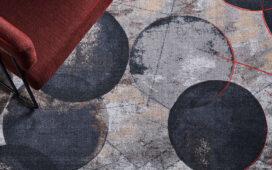The rules and criteria that designers adhere to create rooms that are both useful and aesthetically acceptable are known as interior design principles. Balance, harmony, rhythm, proportion and scale, emphasis, and contrast are the six major tenets of 室內設計. Any area in your house, from the living room to the bathroom, can be decorated using these ideas.
1. Balance
Balance in design creates the appearance of equilibrium. It has to do with the visual element, and it involves placing furniture and decorative items in a room as equally as you can so that everything has the same visual weight. The placement of the pieces within the area must be considered to achieve equilibrium.
2. Harmony
The design of a home should emphasise unity. To make a harmonious overall, each piece of furniture, style, and decoration must complement the others. Your home design is beautiful since all of the design components are cohesive and consistent. Always keep in mind that the project’s patterns, colours, textures, and other elements should flow naturally from one to the next. If not, the space’s separate components will clash and look out of place.
3. Rhythm
The rhythmic structure of a piece of music would be described if we were to analyse it. The interior design utilises the same idea: rhythm is created through the visual repetition of shapes. We should consider organising items in our homes’ decor such that there is repetition, progression, and transition.
4. Scale and Proportion
The best strategy for creating a sense of belonging among the items in a room is to use the concepts of proportion and scale. Whether it be size, shape, form, or colour, everything must be in harmony with the surrounding objects and the room.
Scale is the comparison of the sizes of objects, while the proportion is the connection between two objects. A large, overstuffed sectional, for instance, will look out of place in a small room. A modest coffee table could seem out of place in front of two large sofas.
5. Emphasis
The use of an accent in a space that draws attention, such as colour, component, texture, or pattern, is known as the emphasis in 室內設計公司. A space without a focal point is forgettable and uninteresting. Therefore, picking one thing in the room to act as the centre of attention, around which the rest of the design will spin, is required by the principle of emphasis.
6. Contrast
There are numerous methods to add contrast to a space. The use of colour is one of the most noticeable. Warm and cold hues or light and dark colours together can produce a dramatic result. Scale, pattern, and texture are further aspects of contrast that you might use.







